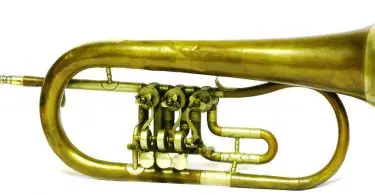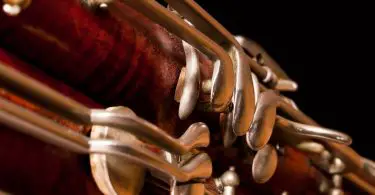It can be incredibly overwhelming to search for a new mouthpiece for your saxophone or clarinet. To say there is a vast selection is an understatement. There are tons of models and variations in all types and sizes, so it is imperative that you know what you are looking for.
You need a mouthpiece that will not only match your instrument, but also your music style and skill level. Here are a few tips on what to look for in a new woodwind mouthpiece and a few reviews to help you get started with your search.
When you have been a musician for as long as I have, you know that it is vital to your profession to have a high-quality instrument with high-performance accessories that will improve your playing experience.
If you’re looking to replace a damaged mouthpiece for your woodwind instrument or are interested in an upgrade, you can be quickly flooded different materials, designs, and price points.
Gone are the days of limited model options, you will be pleasantly surprised by all the different options that you will available to you.

Credit: Amazon.com
Top Pick: D’Addario Select Jazz Alto Saxophone
Vintage inspired, but the ideal balance of feel and tone with detailed computer created technology, and milled, instead of molded, from solid rubber.
Before You Start Your Search
There are a few things to consider before you start shopping. A good mouthpiece can keep you from having a discouraging time playing your instrument instead of the fun and rewarding experience you want.
The mouthpiece actually links the instrument and the player, so this is a vital part of the instrument that you need to pay the most attention to. Plus, getting the right mouthpiece can save you money.
If you are still on a beginner instrument with the mass produced mouthpiece that came with it, you can simply replace it with a higher-quality mouthpiece and delay needing to buy the next step up instrument. If you are new to buying mouthpieces, here are a few things to keep in mind while you shop:
If someone you admire plays a particular mouthpiece, that doesn’t mean it will work for you as everyone’s abilities are different, plus everyone’s mouths and lungs will vary as well.
Great mouthpieces are easy to blow, are very stable, play in tune, and can produce a consistent clean tone without a problem.
A good mouthpiece will have a clear tone that is resonant and focused with a strong fundamental and good projection.
Tuning
You need to make sure you get a mouthpiece that is specially designed for your instrument. Mouthpieces are instrument-specific so you can use a tenor sax mouthpiece on an alto sax, and vice-versa.
Anatomy of the Mouthpiece
The more familiar you are with the different parts of a mouthpiece and how they work, they easier it will be to find the best mouthpiece that will have the feel, sound, and level of playing accuracy that you prefer.
Baffle
The baffle is the part of the mouthpiece that you will find right behind the tip rail. The way the baffle is shaped determines what the relative darkness or brightness of the mouthpiece is as well as its “buzz.”
Basically, you get a brighter sound the closer the baffle is located to the reed. And if the baffle is located farther away from the reed, which is often called a “low” or “small” baffle, it will give you a darker sound.
Break Point
The break point is where the reed is separated from the table’s flat surface, which is also the beginning of the facing curve.
Chamber
The chamber is the open space in the center of the mouthpiece that is located between the floor and bore. You get a “fatter” tone from larger chambers produce while you get a more focused and narrow tone from a small chamber. Smaller chambers are often found in more of the modern mouthpieces giving them a brighter sound.
Tip Opening or Facing Curve
How much resistance you get in a mouthpiece effects the playability, sound, and control characteristics in both clarinet and saxophone mouthpieces. This is referred to as the lay of the mouthpiece.
There are two components that will help to express it that are the facing curve and the tip opening you find at the end of the mouthpiece. The facing curve encompasses the area from the tip to where the mouthpiece contacts the reed.
When you hear a tip described as open, it means that there is open space in between the reed and the tip. They can also be closed which means there is less space.
You have more flexibility with an open tip. The facing curve varies in length between the reed and the tip, and the shorter the facing curve length is the softer the reed has to be.
You will get the least resistance and need a firm reed with a long facing curve and a close tip. This is actually an easier to control mouthpiece that gives you a pretty dark tone.
In comparison, short facing curves and an open tip will need a softer reed and give you a brighter tone and greater resistance. The rule of them is that any time you buy a mouthpiece you will need to play around with the firmness of the reed.
Control
Mouthpieces that have better control are good for beginners while the advanced player will want to get mouthpieces with different tonal qualities and experiment with different lays.
Many models have a number of different lays, and they will be graded alphabetically or dependent on hundredths of an inch, from least to most resistant. These types of facing charts can help you make a short list of mouthpiece possibilities.
Side Walls and Side Rails – The side walls will create the interior shape of your mouthpiece that leads into the chamber. The tone and volume are impacted by the shape and depth of the walls and rails.
Table – The table is the flat section where you will find the reed is clamped by the ligature. The tables are usually perfectly flat, but you will find some models that use a little concavity to adapt to any swelling by the reed when it grows wetter.
Tip rail – This is the point where the reed seals when the mouthpiece is vibrating. This shouldn’t be too thin or too thick since that can cause problems with how responsive the instrument is.
Window – The window is the opening that the reed is positioned over.
The Ligature
The ligature is the fastening hardware that will fit over the mouthpiece that holds the reed in place on your instrument. The ligature applies pressure evenly to the reed as just a little unevenness will give you poor intonation and squeaks.
Saxophone and Clarinet Mouthpiece Materials
Manufacturers use different materials when they make both saxophone and clarinet mouthpieces. Each of the materials has their own weaknesses and strengths and weaknesses as far as aesthetics, playability, and durability.
The materials also can have an effect on the tone as there are certain sound characteristics that are usually associated with different types of materials.
Plastic
Plastic mouthpieces are the most inexpensive of the materials, and it is usually a good choice for those starting out.
Hard Rubber
Hard rubber is one of the more common mouthpiece materials that gives you a more focused tone than you get from plastic.
You will get a fairly mellow sound that is food when you are looking for a “rounder” tone that has fewer projections and edge. Hard rubber can also create full, rich, and loud tones.
Crystal
Crystal mouthpieces are less common, but they give you a bright tone that is good with jazz music. They are not very durable, and you must be very careful handling them.
Though not commonly used, crystal mouthpieces deliver a bright tone that’s particularly good for jazz.
Saxophone-Specific Materials
There are two types of metals that saxophone mouthpieces can be made out of:
Brass – the most common
Stainless Steel – gives you a brighter tone
These are generally more expensive than hard rubber, but they are often preferred by players who want brightness and like the look of the material like jazz players.
Saxophone Mouthpieces
Saxophone mouthpieces tend to be created for a specific genre. Jazz players like the higher baffles with the larger chambers and tip openings that will give you a fatter tone.
Saxophone mouthpieces are specifically created for either jazz, rock, or fusion styles of music, so that players can get a specific timbre out of their instrument.
To help players get these timbres out of their instrument, mouthpiece manufacturers design models that have large chambers, high baffles, and large tips.
The Competition
After hours of testing and research, here's the final competition.
| Instrument | Rating | Current Pricing |
|---|---|---|
D'Addario Select Jazz Alto | Produce that classic jazz sound and give you that sought-after response you hear from vintage mouthpieces |  |
Otto Link Metal New York Series | Has merged great looks with a deep and rich sound quality from a large bore rubber mouthpiece that retains its superb sound and style |  |
Rovner L5 Light Ligature | Designed to hold the reed without using pressure points, so the reed will sit evenly on the face of the mouthpiece getting rid of any stuffiness and increasing tonal clarity |  |
Yibuy Gold Plated Clarinet | Has a superb dynamic range with a bright sound and is perfect for either beginners or professionals |  |
BQLZR Professional | High-quality mouthpiece that provides you the sound of metal with complete control with the price of a plastic or rubber mouthpiece |  |
Vandoren CM4158 M13 | Mouthpiece that allows you to easily blow with harder reeds to create a rich and centered sound |  |
DN Professional | Gives you the metal sound you want with total control |  |
Vandoren LC01P Optimum | Comes with three pressure plates that are interchangeable with different timbre pressure points |  |
Otto Link Metal Tenor Saxophone | The larger bore rubber mouthpiece includes a ligature and cap to give you superb sound plus style |  |
Meyer Hard Rubber Alto Saxophone | Easy to blow hard rubber mouthpieces that are good for beginners to professionals |  |
JodyJazz HR* Hard Rubber Alto Saxophone | Versatile, yet traditional, mouthpiece that retains the feel, look, and the sound of those vintage hard rubber mouthpieces that everyone loves |  |
Rovner V-1R Clarinet Ligature | Gives performers the versatility of total tonal control and precise intonation through the registers |  |
Our Recommendation:
D’Addario Select Jazz Alto Saxophone

Credit: Amazon.com
D’Addario’s Select Jazz Mouthpieces is a vintage-inspired mouthpiece that uses modern techniques to find the ideal balance of feel and tone. With its precision design, the D’Addario’s was created with a detailed computer created technology that specializes in making mouthpieces.
The D’Addario’s was created with a detailed computer created technology that specializes in making mouthpieces. A team of engineers and musicians expertly designed it and had it milled, instead of molded, from solid rubber.
This mouthpiece is totally machine-finished with facing lengths and medium chambers features in the three tip openings that are currently available – 5, 6, and 7. Select jazz features produce that classic jazz sound and give you that sought-after response you hear from vintage mouthpieces.
The D’Addario’s Select Jazz Mouthpiece has incredible versatility that is needed for playing all styles of jazz and to produce even intonations for the complete saxophone range.
This is a perfect mouthpiece for advanced students and professional players. It is available in the $150 range.
Pros
Good mouthpiece for a decent price
Impressive student mouthpiece
Well-made, creates a warm sound
Cons
Chamber is too large for some people
Runner Up: Otto Link Metal New York Series

Credit: Musician’s Friend
The Otto Link Metal New York Series is the epitome of husky tenor sounds that you can get from the large chambered mouthpiece. It includes the ligature and cap with the gold plated bell metal brass mouthpiece.
Otto Link has merged great looks with a deep and rich sound quality from a large bore rubber mouthpiece that retains its superb sound and style.
They have a huge selection of facings that give you a superb tone quality, complete with projection, for total control. Otto Link is a top choice among professionals and can be used for Bb Clarinet as well as all types of Saxophone.
The Otto Link has been a popular choice among musicians for over 50 years to produce quality professional sounds. It is available in the low $200’s.
Pros
Easy to blow for beginners
Great tone, easy to use
Great projection with a little edge
Cons
A little on the expensive side
Other Products to Consider:
Rovner L5 Light Ligature

Credit: Amazon.com
The Rover L5 Light is ideal for the contemporary player who needs a ligature to help get a better response and free playing sound from their instrument.
This is especially appreciated by Jazz musicians who want to concentrate more on their music instead of worrying about the response they will get.
It is designed to hold the reed without using pressure points, so the reed will sit evenly on the face of the mouthpiece getting rid of any stuffiness and increasing tonal clarity. The Rover L5 Light is available for $25.
Pros
Makes your tone more event and your sound better
Unique and original piece
Great innovation that quality of your instrument
Cons
It is slightly hard to adjust
Yibuy Gold Plated Clarinet

Credit: Amazon.com
The Yibuy 95x is ideal as a B-flat Clarinet Mouthpiece. It easily acquires a clean, balanced, and focused tone no matter what the octave.
It has a superb dynamic range with a bright sound and is perfect for either beginners or professionals. The Yibuy 95x is available in the $13 range.
Pros
Great for both beginners and professional
Bright sound, affordable price
Focused tone, great for school band
Cons
None
BQLZR Professional Clear Transparent Clarinet

Credit: Brass Band Gear
The BQLZR mouthpieces is designed for the Bb Clarinet. This is a high-quality mouthpiece that provides you the sound of metal with complete control with the price of a plastic or rubber mouthpiece.
It is great for advanced or professional players. The BQLZR mouthpiece is available in the $10 range.
Pros
Fits well and works great
Has great sound possibilities
Great replacement mouthpiece
Cons
Not good for a student Bb clarinet
Vandoren CM4158 M13

Credit: Strait Music Company
The Vandoren CM4158 is an easy to play mouthpiece that sounds best in the upper register giving performers a pure sound. It is a medium long facing mouthpiece that works best with Vandoren #3.5-#5 Reeds.
It is little more open than the M13 mouthpiece that allows you to easily blow with harder reeds to create a rich and centered sound.
It is best for chamber and symphonic music. The Vandoren CM4158 is available for around $100.
Pros
Good for professionals all the way down to an intermediate student
Well worth the price
Instantly improves your tone
Cons
Not good for beginners or young players
DN Professional Clear Transparent Clarinet

Credit: Brass Band Gear
The DN Professional mouthpiece is designed for the Bb Clarinet comes with at the price point of plastic or rubber, but gives you the metal sound you want with total control.
The DN Professional mouthpiece is available in the $15 price range.
Pros
Good mouthpiece if you are on a budget
Great mouthpiece
Gives you a better sound
Cons
Not good for beginners
Vandoren LC01P Optimum

Credit: Amazon.com
The Vandoren LC01P Optimum Ligature allows you to have the freedom of expression you need while you are playing. It has fast and accurate tightening with pressure plates and a cap available if you need replacements.
It can produce tones in the entire range and is comfortable in achieving dynamics. It features a single screw adjustment that threads through both of the posts in the ligature to provide even pressure on the reed.
This enables the reed to perform to your needs. It also comes with three pressure plates that are interchangeable with different timbre pressure points.
The Vandoren LC01P is available for around $70.
Pros
Clean, clear tone
Doesn’t stretch out like fabric ligatures tend to do
Serious high school students and professionals
Cons
Not good for beginners
Otto Link Metal Tenor Saxophone

Credit: Musician’s Friend
The Otto Link Saxophone Mouthpiece has 24k gold plating to mix great look with a rich sound. The larger bore rubber mouthpiece includes a ligature and cap to give you superb sound plus style.
This is a professional level mouthpiece from the respected Otto Link. Bell metal mouthpieces are popular with professional touring saxophonists in pretty much every style of music from jazz to pop and classical, even R & B and rock.
They have a superb tone with a wide array of available facing sizes to elevate your sound. The Otto Link Saxophone Mouthpiece is available in the $200 range.
Pros
Easy to play with a great sound
Gives you a consistent tone
Very warm, soft and mellow sound
Cons
Reed position can move
Meyer Hard Rubber Alto Saxophone

Credit: Musician’s Friend
The Meyer Hard Rubber Alto Saxophone Mouthpiece is an industry benchmark. They are easy to blow hard rubber mouthpieces that are good for beginners to professionals.
They are a popular choice for any level player. They have been the most popular jazz mouthpiece available for many years since they can give you a wide range of responses, sounds, and dynamic ranges.
There are several different chamber sizes and facing to help you to personalize your tone. The Meyer Hard Rubber Mouthpiece is available in the low $100’s.
Pros
Makes a significant difference in your playing
Well-made and fits the reed well
Great mix of sound and edge
Cons
Mouthpiece can be hard to control
JodyJazz HR* Hard Rubber Alto Saxophone

Credit: JodyJazz Inc
The Jody Jazz HR give you a vintage tone for your alto saxophone. It is a hard rubber mouthpiece that is great for beginners and professionals.
It is a versatile, yet traditional, mouthpiece that retains the feel, look, and the sound of those vintage hard rubber mouthpieces that everyone loves. This is a popular mouthpiece due to its high-quality control standards and warm sound.
It mouthpiece is constructed by a special facing machine and then hand finished to create a nice free blowing that is a great value for the quality. it comes with a cap, ligature, and pouch for only $200.
Pros
Great response and tone
Easy to control, great projection
Gives you full range
Cons
Not for beginners
Rovner V-1R Clarinet Ligature

Credit: Amazon.com
The Rovner V-1R includes new body materials and an improved cradle from a newly embraced manufacturing process which exceeded the performance of its forerunner, the Rover Eddie Daniels II.
The best part is that it is cheaper than its forerunner as well, plus it can be adjusted to make six different tones. You cannot invert the ligature, but, in all positions, the cradle is constructed to sit right on the reed with the screw tightened up against the mouthpiece.
This ligature gives performers the versatility of total tonal control and precise intonation through the registers. There are no pressure points when the ligature holds the reed to the mouthpiece, so the read sits even with the face of the mouthpiece to get rid of stuffiness and increase tonal clarity.
The Rovner V-1R is available in the $50 range.
Pros
Makes a positive difference in your tone
Easy to slip off and change the reed
Makes even poor reeds sound better
Cons
A little on the fussy side for some players








Start the discussion at talk.hearthemusicplay.com